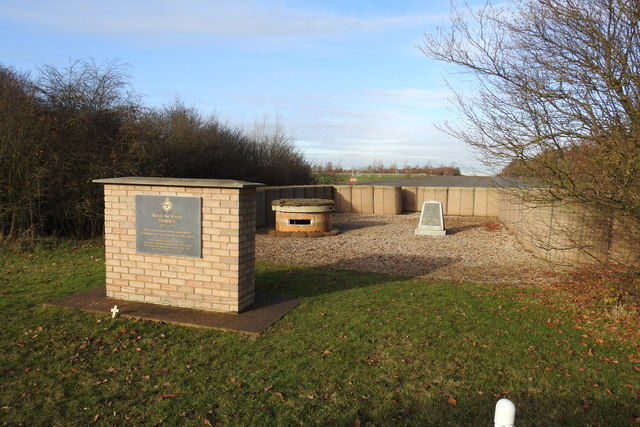RAF / USAAF Debden Airfield Memorial
Introduction
The photograph on this page of RAF / USAAF Debden Airfield Memorial by Adrian S Pye as part of the Geograph project.
The Geograph project started in 2005 with the aim of publishing, organising and preserving representative images for every square kilometre of Great Britain, Ireland and the Isle of Man.
There are currently over 7.5m images from over 14,400 individuals and you can help contribute to the project by visiting https://www.geograph.org.uk

Image: © Adrian S Pye Taken: 3 Dec 2019
The memorial consists of Four elements. The Dedication plaque on the brick wall, a smaller memorial to the 4th Fighter Group, a Pickett Hamilton fort, a number of which were used on the airfield for protection, and behind the memorial is the secondary north-south runway. (The following is from Wikipedia) The airfield was opened in April 1937 and was first used by the Royal Air Force. One of Debden's early and most bizarre experiences was when the airfield was chosen as a location for the film "It's in the Air" in which George Formby was to pilot a Hawker Fury through Hangar No. 3. The rather sharper angle of the hangars at Debden built around the tarmac apron allowed free access at both ends of the end hangar. The flying for the sequence was actually done by Flying Officer R. H. A. Lee who disappeared on 18 August 1940 when he was last seen ten miles north of Foulness Point chasing three German aircraft out to sea. Hard surface runways were laid in 1940. During the early years of World War II it was a Sector Station, with an Operations Block for No.11 Group RAF during the Battle of Britain. The airfield was attacked several times during the Battle of Britain. The first air-raid sounded on 18 June 1940, although the first bombs were not dropped on the airfield until seven days later. Then, on 2 August, came a heavy attack which destroyed several buildings, killing five, to be followed by another severe raid on 31 August. During August and September, Debden fighters claimed seventy aircraft destroyed, thirty probables and forty-one damaged. During May through into September 1942 Debden was used by the American 71, 121 and 133 "Eagle Squadrons" with Spitfire Mk. Vs. On 12 September 1942, the airfield was transferred to the USAAF Eighth Air Force and was assigned the USAAF designation Station AAF 356 and the three Eagle Squadrons were transferred to the 4th Fighter Group, now flying Republic P-47 Thunderbolts later changing to North American P-51 Mustangs in April 1944. The 4th Fighter Group destroyed more enemy aircraft in the air and on the ground than any other fighter group of the Eighth Air Force. After the RAF left the site became Carver Barracks. Due to its postwar use, the airfield and technical site is almost completely intact from its World War II configuration.

